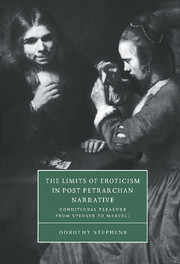Book contents
2 - “Newes of devils”: feminine sprights in masculine minds
Published online by Cambridge University Press: 22 September 2009
Summary
In one of The Faerie Queene's most relentlessly allegorical passages, Spenser dissects the castle that belongs to a woman named Alma, revealing to us piece by piece the anatomy of its architecture. Its rooms are organs; its daily occupations are those of digestion and elimination; its thrifty housewife is the soul. The poem's speaker takes pains to distinguish intemperate bodies from this exemplary one:
What warre so cruell, or what siege so sore,
As that, which strong affections do apply
Against the fort of reason euermore
To bring the soule into captiuitie. …
But in a body, which doth freely yeeld
His partes to reasons rule obedient,
And letteth her that ought the scepter weeld,
All happy peace and goodly gouernment
Is setled there in sure establishment ….
(II.xi.1–2)Yet this seemingly well-bounded allegory, at times almost clunky in its demands for an obvious reading, turns out to provide an imperfect container for the imaginative faculty: a servant named Phantastes allows his visions, which prove to be characteristically feminine, to cross and recross the body's proper outlines. I will argue that by conceiving the human imagination in gendered terms, Spenser ends up rearranging the architecture of the self. Although readers of The Faerie Queene have often felt that the poet is suspicious of the imagination, Spenser uses gender to confuse the issue of “good” versus “bad” forms of imagination and then – startlingly – goes out of his way to privilege this selfconfusion.
- Type
- Chapter
- Information
- The Limits of Eroticism in Post-Petrarchan NarrativeConditional Pleasure from Spenser to Marvell, pp. 47 - 72Publisher: Cambridge University PressPrint publication year: 1998

